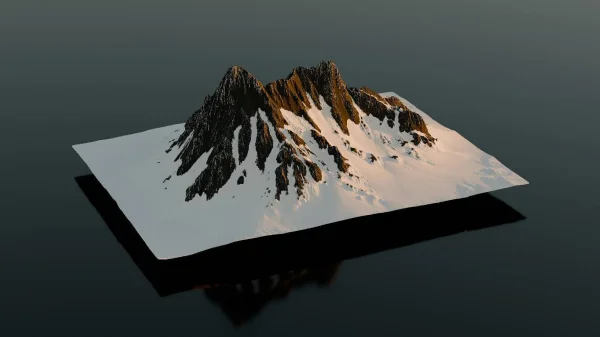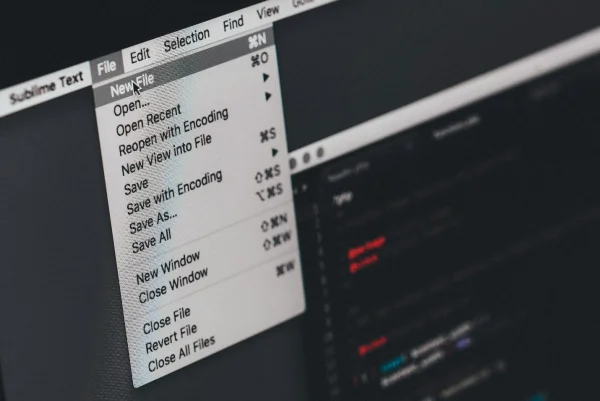Essential Tips for Optimizing 3D Assets for Faster Loading and Better Performance

In today’s digital-first world, speed is everything. Whether you’re building a mobile game, developing a VR experience, or launching an interactive website, your 3D assets must load quickly and perform flawlessly. Even the most stunning 3D model loses its impact if users are stuck staring at loading screens or experiencing lag.
Optimization is no longer optional — it’s critical. By optimizing your 3D assets properly in mintvoxel, you ensure better user experiences, lower system demands, and broader device compatibility. In this guide, we’ll explore essential techniques and best practices to keep your 3D projects fast, efficient, and visually stunning.

Why Optimization Matters
The demand for faster load times and smoother performance is higher than ever:
- User retention depends on seamless experiences.
- Mobile devices have limited processing power and bandwidth.
- Web-based applications (such as WebGL) require lightweight assets to ensure quick interaction.
- VR and AR platforms demand high frame rates to avoid motion sickness.
Without optimization, even beautiful assets can cause:
- Long load times
- Frame rate drops
- High memory consumption
- Poor user experience
- Increased server and hosting costs
Investing time in optimization during the asset creation phase saves hours of troubleshooting and enhances the final product’s reach and impact.

👍 1. Minimize Polygon Counts Wisely
While detailed meshes look impressive, unnecessary geometry increases file size and rendering time dramatically.
Best Practices:
- Use the lowest polygon count that still conveys the necessary shape and silhouette.
- Rely on normal maps to simulate surface details like bumps, cracks, or intricate patterns.
- For background objects, use extremely low-poly models — users won’t notice minor details at a distance.
- Consider using automatic decimation tools (like Blender’s Decimate Modifier) with careful manual cleanup afterward to preserve essential features.

👍 2. Optimize Textures and Materials
Textures often consume more memory than geometry.
Optimization Tips:
- Compress textures: Use formats like JPEG, WebP, or optimized PNGs.
- Reduce resolution: Only use high-res textures where absolutely necessary.
- Texture atlasing: Combine multiple textures into a single map to reduce the number of draw calls during rendering.
- Trim unused areas: Tight UV mapping ensures you maximize texture space and reduce waste.
- Material consolidation: Merge materials when possible. Fewer materials mean fewer state changes for the GPU, resulting in faster rendering.

👍 3. Implement Level of Detail (LOD) Models
Level of Detail (LOD) systems dynamically switch between versions of a 3D asset based on the viewer’s distance. Close-up models are highly detailed, while distant versions use simplified geometry.
Key Advantages:
- Dramatically reduces rendering load.
- Improves performance without compromising the visual quality at key moments.
- Essential for open-world games, VR, and AR experiences.
💡 Tip:
Create at least 2–3 LOD versions for critical models and set appropriate switching distances based on your platform.

👍 4. Bake Lighting and Shadows
Real-time lighting and shadow calculations are expensive. Whenever possible, bake static lighting and shadows directly into textures during asset production.
Benefits:
- Reduces the need for dynamic lighting computation.
- Enhances performance, especially on lower-end hardware.
- Adds realism without a heavy performance cost.
This technique is ideal for environments, props, and architecture that do not require dynamic lighting changes.

👍 5. Scale and Orient Correctly
Scaling and axis orientation might seem trivial, but they can cause major workflow disruptions if handled improperly.
Ensure:
- Models are at real-world scale (e.g., a door is about 2 meters tall).
- Orientation matches the target platform (Y-up for Unity, Z-up for Unreal Engine).
- Pivot points are positioned logically — usually at the model’s base for characters and at the center for symmetrical objects.
Correct scaling and orientation speed up scene assembly and physics interactions.

👍 6. Choose the Right File Format
Each 3D file format has strengths and weaknesses depending on the project.
Recommended formats:
- GLB / glTF: Best for web applications, mobile AR, and general lightweight delivery. Supports compressed textures, animations, and PBR materials efficiently.
- FBX: Popular in gaming and animation. Robust support for bones, skinning, and keyframe animations.
- OBJ: Simple geometry without animations; good for basic models where small file sizes are needed.
Use tools like gltfpack to further compress GLB/glTF files without noticeable quality loss.

👍 7. Keep Asset Hierarchies Clean
Messy asset structures create performance bottlenecks during scene traversal.
💡 Tips:
- Minimize the number of nested objects.
- Avoid excessive use of empty groups or redundant nodes.
- Simplify hierarchy trees where possible to make scene parsing and loading faster.
A clean structure also makes it easier for teams to collaborate and for developers to script interactions.

👍 8. Test Across Multiple Devices
Finally, always validate your asset performance across different platforms — including mobile, tablet, desktop, and VR headsets if applicable.
Testing checklist:
- Load time measurement
- Frame rate consistency
- Memory consumption
- Visual fidelity under different rendering conditions
- Handling of asset loading under poor network conditions (especially for web)
By simulating real-world usage, you can spot and fix bottlenecks before your users experience them.
Conclusion
Optimizing 3D assets is both an art and a science. It requires balancing visual quality with performance constraints, choosing the right tools, and anticipating the needs of diverse devices and platforms.
By applying smart optimization strategies — from reducing polygon counts to using efficient textures and building clean hierarchies — you ensure that your creations not only look beautiful but perform flawlessly in any environment.
In the competitive world of digital experiences, speed is impact.
Make your 3D assets count — beautifully and efficiently.
Ti potrebbe interessare:
Segui guruhitech su:
- Google News: bit.ly/gurugooglenews
- Telegram: t.me/guruhitech
- X (Twitter): x.com/guruhitech1
- Bluesky: bsky.app/profile/guruhitech.bsky.social
- GETTR: gettr.com/user/guruhitech
- Rumble: rumble.com/user/guruhitech
- VKontakte: vk.com/guruhitech
- MeWe: mewe.com/i/guruhitech
- Skype: live:.cid.d4cf3836b772da8a
- WhatsApp: bit.ly/whatsappguruhitech
Esprimi il tuo parere!
Ti è stato utile questo articolo? Lascia un commento nell’apposita sezione che trovi più in basso e se ti va, iscriviti alla newsletter.
Per qualsiasi domanda, informazione o assistenza nel mondo della tecnologia, puoi inviare una email all’indirizzo [email protected].
Scopri di più da GuruHiTech
Abbonati per ricevere gli ultimi articoli inviati alla tua e-mail.
